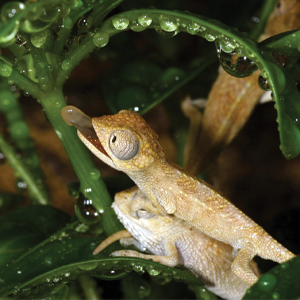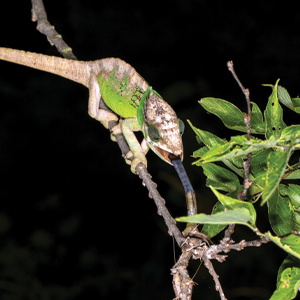USD Biologist Discovers Chameleons and Salamanders Independently Invented the Same 'Tongue Catapult'

Researchers at the University of South Dakota and the University of South Florida found that despite their distant evolutionary histories, both animals use a sliding-based force transmission system—unlike tendon-driven pulling mechanisms common in most musculoskeletal systems. This design enables rapid, high-powered launches across a wide range of body sizes. Unlike typical muscles that pull on bones, this system lets the tongue accelerate rapidly over a straight path.
“Amazingly, while these systems have converged on this similar mechanism, they have done so in the opposite way,” said Christopher Anderson, Ph.D., associate professor of biology at USD. “In chameleons, the tubular muscle is projected off the skeletal rod to launch from the mouth with the tongue pad, while in salamanders, the tubular muscle stays behind and a pair of skeletal rods are launched from the mouth with the tongue pad. In doing so, salamanders are literally projecting part of their skeleton out of their mouth when they feed.”
The results are eye-popping: tongues reaching speeds of 2–5.5 meters per second, with accelerations up to 590 times of gravity (5,740 m/s²). The launches happen in just milliseconds, yet the mechanism works equally well in tiny salamanders and large chameleons—maintaining performance across a 30-fold size range.
“It’s like an aircraft catapult built with soft tissue,” said lead author Yu Zeng, Ph.D., post-doctoral fellow in integrative biology at the University of South Florida. “This design allows vertebrates to achieve speeds and efficiency once thought possible only with hard, spring-loaded systems in insects or crustaceans."
The finding reveals not only an elegant case of evolutionary convergence but also a potential model for engineers. A soft, tubular actuator capable of repeatedly accelerating a payload could inspire new designs in robotics and soft machines.
The study, “Convergently Evolved Linear Actuators in Ballistic Tongues,” appears in “Current Biology.”





